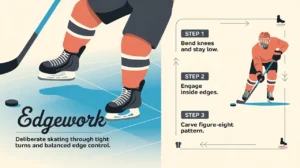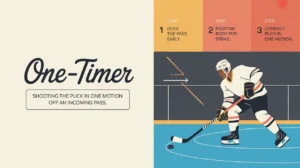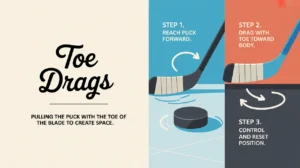Jim’s Intro to Clearing the Zone
Hi folks, Jim here, the only commentator who once mistakenly thought clearing the zone was a special Zamboni maneuver.
What is clearing the zone?
Clearing the zone is when a defending team moves the puck out of its defensive zone to relieve pressure, reset the play, or transition to offense. It’s one of the simplest yet most critical plays in hockey.
How does it work?
Clearing relies on timing, awareness, and smart execution:
- Read the Pressure: Recognize when opponents are pressing hard in your end.
- Get Control First: Secure the puck before attempting a clear to avoid turnovers.
- Use the Boards or Glass: A banked chip or flip can get the puck safely out under pressure.
- Pass with Purpose: If there’s time, make a controlled breakout pass to start an attack.
- Hard and High: When in doubt, a strong clear off the glass or through the neutral zone buys time.
- Avoid Icing: When not on the penalty kill, aim for controlled clears to avoid stoppages.
How do you make good decisions with it?
- Stay Calm Under Pressure: Rushed clears often turn into giveaways.
- Look for Support: If a teammate is open, a pass beats a blind clear every time.
- Know the Game Situation: On the penalty kill, icing is allowed, so hard clears are ideal.
- Avoid the Middle: Blind clears up the slot are invitations for trouble.
- Anticipate Forecheckers: Read their angles and adjust your clear accordingly.
How do you master it?
Mastering clears takes repetition, communication, and confidence. Players practice quick retrievals, glass-and-out techniques, and controlled breakouts. Strong decision-making under pressure separates good defenders from great ones.
What does it look like when done right?
A clean zone clear looks decisive and efficient. The defender wins the puck, makes a quick read, and sends it out cleanly, defusing the attack and setting up the next play without panic.
Commentator’s Corner
Jim’s Take
A perfect clear is like hitting the reset button. One second your goalie’s swimming, the next you’ve got room to breathe.
Parent Tip
Teach players to focus on controlled clears, not just whacking the puck away. Smart clears build confidence and structure.
Player Tip
Keep your head up, use the boards wisely, and know when to go safe versus when to make a play.
A Final Thought
Clearing the zone is simple hockey done well. Master it, and you’ll turn tense moments into smooth transitions that keep your team out of trouble.









